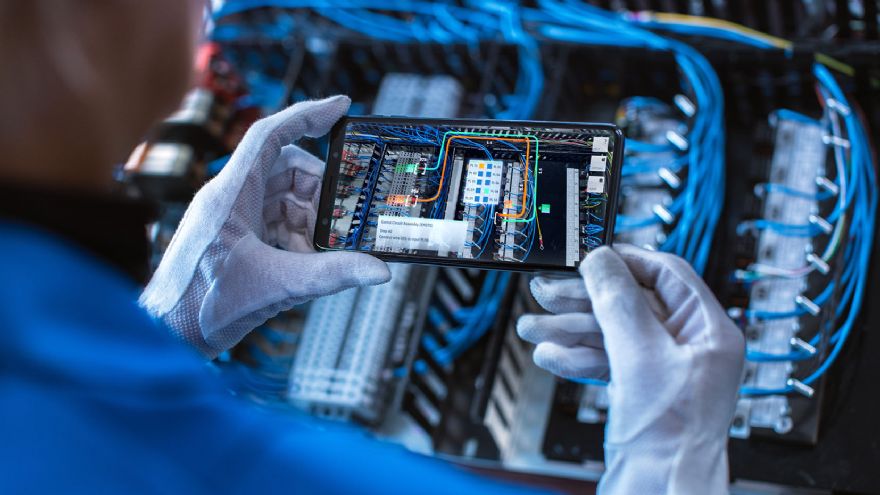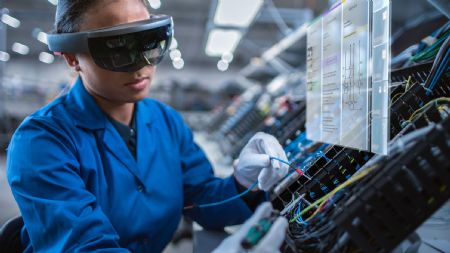
Covid-19 will accelerate the move to Augmented Reality (AR) and other IoT (Internet of Things) solutions, as companies around the UK look to adapt to a ‘new working normal’, according to Jim Heppelmann, CEO at industrial innovation technology specialist PTC (
www.ptc.com).
He believes the way frontline workers have seamlessly adapted to the benefits of AR, to continue working during the pandemic has paved the way for greater adoption and a desire to tap into huge cost savings and greater productivity.
While on-line meeting platforms like Zoom and Microsoft Teams have become the norm for office workers, physical specialists have embraced digital transformation to build ventilators, deliver crucial training to apprentices and solve production bottlenecks on automotive lines. This has been achieved by allowing remote experts to see the physical world in video and annotate physical objects during the call, using a smart phone, tablet or wearable tech, such as Microsoft HoloLens glasses.
It enables them to capture every step of the process/build/assembly and create an interactive step-by-step guide for other people to follow, whether that is in a factory thousands of miles away or in a sister company in a neighbouring city.
Mr Heppelmann said: “Traditionally, this would involve engineers travelling to the factory, but suddenly Covid-19 meant that was not possible. So, how do you facilitate collaboration between two frontline workers where one is a veteran technician who needs to explain a laboratory process to a new technician? This used to involve mentoring or ‘job shadowing’, but social distancing makes that difficult.”
Use of AR technology soars“This is where the use of AR technology for collaboration and remote support of frontline workers has soared, enabling experts to be more productive in helping to debug problems and resolve production issues remotely.”
He continued: “Covid-19 has meant industry has been forced to adapt quicker than it probably would have done under normal economic circumstances, but now they’ve had a taste of the operational and financial benefits it can deliver, I can see a major rise in adoption.
“This will be through knowledge exchange and it can also be through knowledge retention when AR can leverage and store the experience and expertise of an ageing workforce so it can be passed down to the next generation. I genuinely believe AR will become the Zoom of the physical world.”

A good example of the power of AR in work capture and exchange, has been seen recently with the urgent need to rapidly manufacture ventilators for the NHS.
Smiths Medical, a medical device manufacturer participating in the Ventilator Challenge UK, needed to ramp up production and tapped into the capabilities of PTC’s Vuforia Expert Capture and Microsoft HoloLens to capture the crucial assembly steps and processes involved in building one of its Rapidly Manufactured Ventilator Systems (RMVS).
This was uploaded and edited to create a virtual assembly guide and relayed, through wearable equipment or smart devices, to the factories of consortium partners that had not previously manufactured ventilators.
Protecting all the workers involved in the project was of paramount importance to the consortium and this is where AR proved ideal for removing a lot of the dangers, by virtually placing a ventilator expert into a partner factory – thus reducing the risk of the virus spreading.
Mr Heppelmann added: “While AR has a lot to offer it has to be implemented carefully and companies need to consider three main things. Prioritisation in how AR can be used across your business and where will you gain the most operational and financial benefits…could it be sales and marketing, could it be on the shopfloor or in the field.
“Secondly, make sure the solution is designed with a device type in mind to ensure a good user experience and this covers whether it is head-mounted or hand-held. Don’t be swayed into going with the latest technology, make sure you choose the right application. Finally, AR is only as good as the quality of the content and the data that companies use.”
PTC employs 163 people across its UK and Ireland operations and provides a host of technology solutions to help industrial companies create value for themselves and the rest of the world. This is achieved through a combination of Augmented Reality, Industrial IoT, Process Lifecycle Management and CAD solutions.